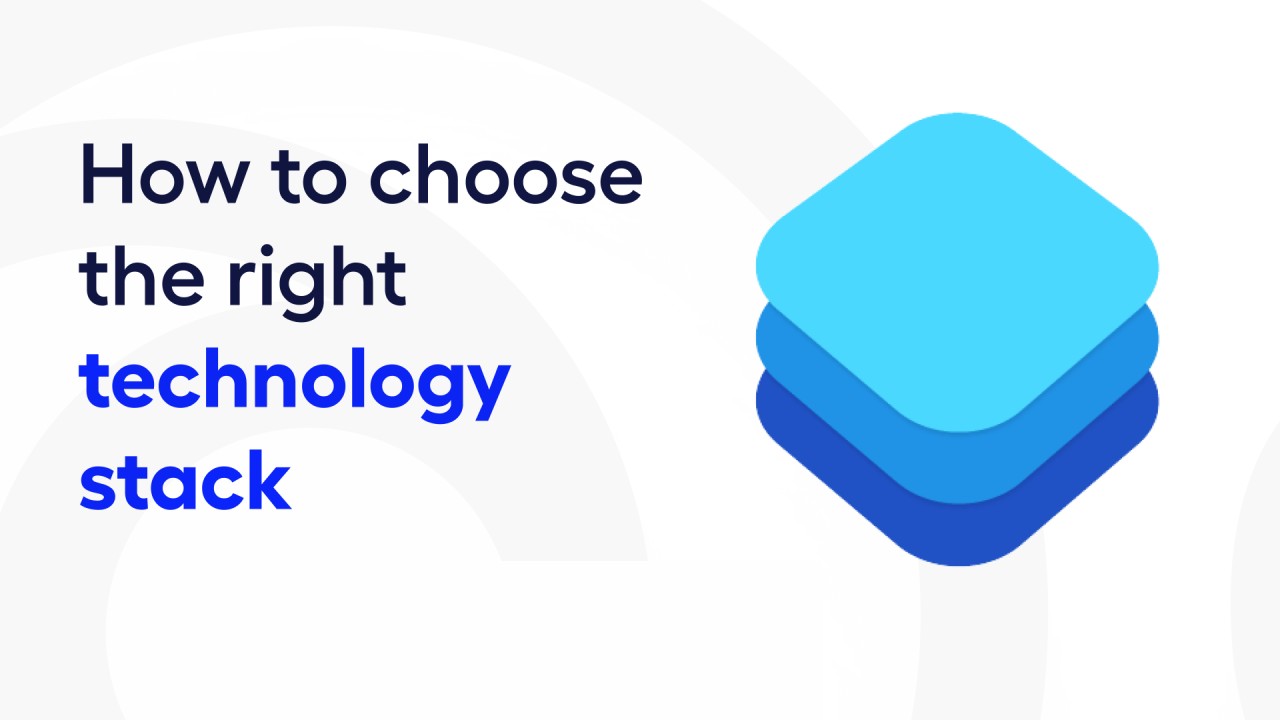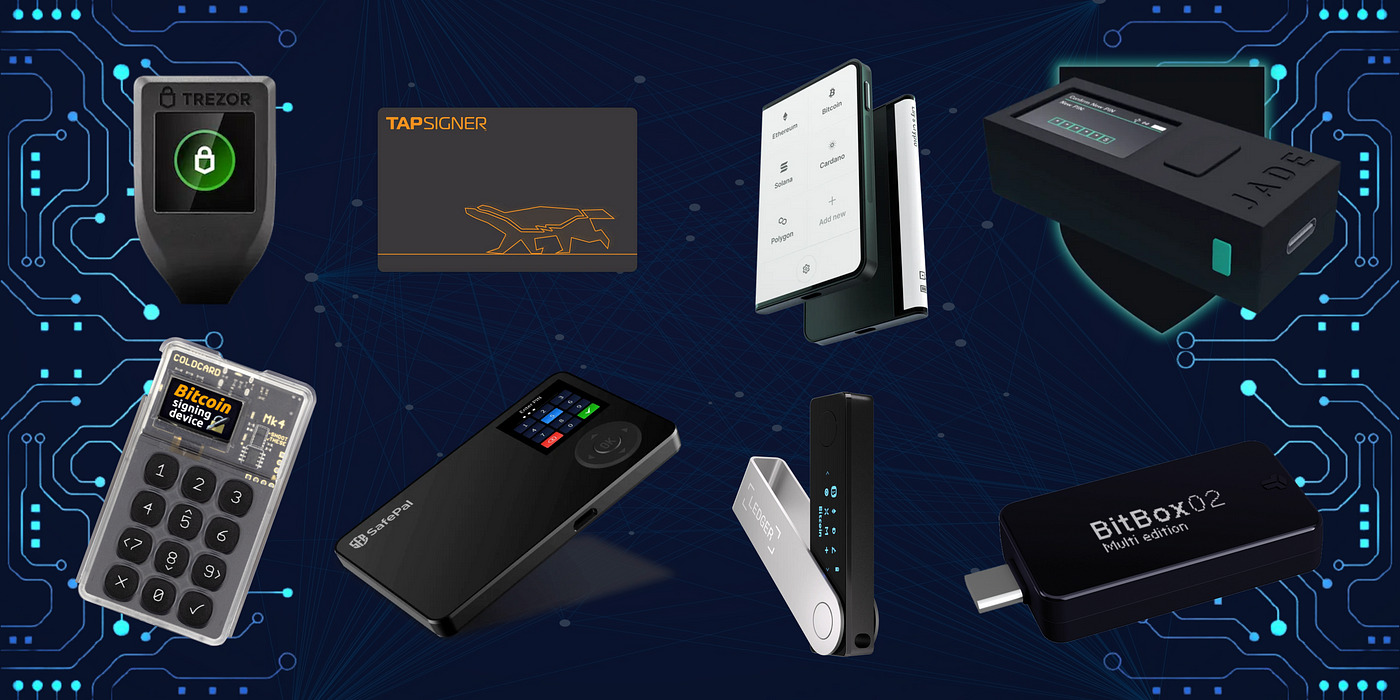Introduction
Welcome to the world of fintech, where technology meets finance to revolutionize the way we manage our money. As the fintech industry continues to grow rapidly, businesses are faced with the exciting task of selecting the right technology to drive their fintech projects forward. With a plethora of options available, choosing the most suitable technology can be a daunting process.
In this article, we will explore the key factors and considerations to keep in mind when selecting technology for your fintech project. By understanding the unique needs and goals of your project, analyzing the regulatory landscape, and evaluating crucial capabilities such as scalability, security, and integration, you can make an informed decision that aligns with your business objectives.
It’s important to note that no two fintech projects are the same, and the technology stack that works for one may not be the best fit for another. The key lies in identifying the specific set of requirements and functionalities that will drive your project’s success.
Throughout this article, we will delve into the various aspects of technology selection in fintech, providing you with guidance on navigating the complexities of this decision-making process. By the end, you will have a clear understanding of the factors to consider and be equipped with the knowledge needed to select the right technology for your fintech project.
Understanding the Needs and Goals of Your Fintech Project
Before diving into the vast array of technology options available, it’s essential to gain a deep understanding of the needs and goals of your fintech project. This initial step will serve as a foundation for the entire technology selection process.
Begin by assessing the specific problem or pain point that your fintech project aims to address. Are you looking to streamline payment processes, enhance customer experience, or provide innovative investment solutions? Clearly defining your objectives will help guide your technology selection and ensure that the chosen solution aligns with your project’s purpose.
In addition, consider the target audience for your fintech product or service. Are you targeting individual consumers, small businesses, or institutional investors? The needs and expectations of these audiences may vary, and your technology choice should account for these specific requirements.
Furthermore, evaluate the scalability and growth potential of your project. Will the technology you select be able to accommodate future expansion? It’s crucial to select a solution that can scale alongside your business to avoid unnecessary disruptions and costly migrations down the road.
Another crucial aspect to consider is the level of integration required. Fintech projects often involve multiple systems and databases that need to seamlessly communicate with each other. Assess the integration capabilities of the technology options and ensure that they can easily integrate with your existing infrastructure or any third-party systems that are critical to your project’s success.
Lastly, evaluate the timeline and budget constraints of your fintech project. Develop a realistic understanding of the resources available and set clear expectations regarding timeframes for implementation. This will help narrow down technology options that are both suitable for your project’s needs and within your budgetary limitations.
By thoroughly understanding the needs and goals of your fintech project, you can lay the groundwork for an effective technology selection process. This understanding will serve as your guiding compass, ensuring that the technology you choose is tailored to meet the unique requirements of your project.
Analyzing the Regulatory Landscape
One of the critical factors to consider when selecting technology for your fintech project is the regulatory landscape in which your business operates. The financial industry is heavily regulated, and compliance with these regulations is paramount.
Before choosing a technology solution, conduct thorough research to understand the legal requirements and compliance standards that apply to your fintech project. Depending on the nature of your business, you may need to comply with regulations such as anti-money laundering (AML), Know Your Customer (KYC), data privacy, and consumer protection laws.
Ensure that the technology you select has the necessary built-in features and capabilities to handle these regulatory requirements. This may include robust data encryption, audit trails, user authentication protocols, and secure data storage. By choosing technology that is inherently designed with compliance in mind, you can minimize the risk of regulatory violations and potential legal consequences.
Furthermore, stay updated with any emerging regulations or changes in existing regulations that may impact your business. The regulatory landscape in the fintech industry is dynamic, and compliance requirements can evolve over time. Choose technology that can adapt to changing regulations and has a track record of promptly updating their solutions to comply with new requirements.
It is also crucial to consider the geographic regions in which you operate. Different countries and jurisdictions may have specific regulations that govern the financial industry. Ensure that the technology solution you choose aligns with the regulatory requirements of each jurisdiction you operate in or plan to expand into.
Additionally, consider the support and expertise that the technology vendor can provide in terms of regulatory compliance. Do they have a dedicated team or resources to assist with compliance-related matters? Can they provide documentation or evidence of their compliance with relevant regulations? These factors can help mitigate regulatory risks and ensure that your technology solution meets the necessary legal standards.
By conducting a thorough analysis of the regulatory landscape and ensuring that the chosen technology solution is compliant with relevant regulations, you can safeguard your fintech project from potential legal and regulatory challenges.
Identifying Key Features and Functionality Requirements
Once you have a clear understanding of the needs and goals of your fintech project, the next step is to identify the key features and functionality requirements that are essential for achieving those objectives.
Begin by making a comprehensive list of the must-have features and functionalities that your fintech solution needs to offer. This could include capabilities such as secure payment processing, real-time data analytics, seamless integration with third-party providers, multi-currency support, or automation of manual processes, among others. Prioritize these features based on their importance to your project’s success.
Consider the user experience (UX) and interface design of the technology solution. Is it intuitive and user-friendly? Does it provide a seamless and engaging experience for your target audience? The user interface should be visually appealing, easy to navigate, and aligned with your brand identity to ensure a positive user experience.
Furthermore, evaluate the scalability and flexibility of the technology solution. Will it be able to accommodate future growth and evolving needs? Can it easily adapt to changing market trends and user demands? Choosing a technology solution that is scalable and flexible allows your fintech project to adapt and evolve over time, without requiring significant rework or system migrations.
Consider the compatibility and interoperability of the technology solution with other systems and platforms. If your project requires integration with existing infrastructure or third-party applications, ensure that the technology you select can seamlessly communicate and exchange data with these systems.
Another crucial factor to consider is data security and privacy. As fintech projects involve the handling of sensitive financial information, it’s imperative to select a technology solution that employs robust security measures such as encryption, access controls, and data backups. Compliance with data protection regulations, such as the General Data Protection Regulation (GDPR), should also be taken into account.
Lastly, consider the potential for customization and future enhancements. Will the technology solution allow you to tailor it to suit your business’s unique needs? Are there opportunities to add new features or functionalities as your project evolves? Choosing a technology solution with customization options and a roadmap for future enhancements ensures that your fintech project can grow alongside your business.
By carefully identifying the key features and functionality requirements, you can create a clear set of criteria that will guide you in choosing the technology solution that best aligns with your project’s needs and goals.
Assessing Scalability and Integration Capabilities
Scalability and integration capabilities play a crucial role in the success of your fintech project. As your business grows and evolves, it is essential to have a technology solution that can scale alongside your needs and seamlessly integrate with your existing systems and third-party platforms.
When assessing scalability, consider both vertical and horizontal scalability. Vertical scalability refers to the ability to handle increasing loads within the existing infrastructure, such as adding more resources like RAM or CPU power. Horizontal scalability, on the other hand, involves adding more servers or nodes to distribute the workload. Determine the anticipated growth trajectory of your fintech project and choose a technology solution that can handle the projected increase in volume and transactions.
Integration capabilities are equally important, particularly if your fintech project involves multiple systems or relies on third-party providers for certain services. Assess how easily the technology solution can integrate with existing infrastructure or external APIs, and whether it supports commonly used integration protocols such as REST or SOAP. Seamless integration allows for efficient data sharing and smooth workflows, enhancing the overall functionality and user experience of your fintech solution.
Consider the availability of pre-built integrations or APIs that the technology solution offers. These can provide shortcuts for connecting with popular services or systems and save valuable development time. Additionally, evaluate the level of technical support and documentation provided by the technology vendor for integration purposes.
Another aspect to consider is the flexibility of the technology solution in terms of data formats and protocols. Depending on the specific requirements of your fintech project, you may need to process or exchange data in various formats such as XML, JSON, or CSV. Ensure that the technology solution can handle diverse data formats and supports commonly used protocols to facilitate seamless data flow.
Lastly, it is important to assess the potential impact of scalability and integration on the performance and security of the technology solution. Determine how the chosen solution maintains performance levels as the workload increases and how it handles potential bottlenecks. Additionally, consider the security implications of integrating various systems and the measures in place to safeguard sensitive data during data transfers.
By thoroughly assessing the scalability and integration capabilities of the technology solution, you can ensure that your fintech project has the flexibility and seamless connectivity necessary to adapt to changing business needs and effectively collaborate with external systems and partners.
Evaluating Security and Compliance Standards
Security and compliance are of utmost importance in the fintech industry, where the protection of sensitive financial and personal data is vital. When selecting technology for your fintech project, it is crucial to evaluate the security measures and compliance standards upheld by the chosen solution.
Start by assessing the data security protocols of the technology solution. Look for features such as encryption, access controls, and data backup mechanisms to ensure that sensitive information is protected from unauthorized access or breaches. The technology solution should adhere to industry best practices and comply with relevant data security standards.
In addition to data security, evaluate the authentication and authorization features of the technology solution. Multi-factor authentication, strong password policies, and role-based access control are essential to ensure that only authorized individuals can access sensitive data and perform critical operations within your fintech solution.
Compliance with relevant regulations is a crucial consideration in the fintech industry. Depending on your jurisdiction and the nature of your business, you may need to adhere to regulations such as anti-money laundering (AML), Know Your Customer (KYC), or data privacy laws such as the General Data Protection Regulation (GDPR). Ensure that the technology solution complies with these regulations and can support your efforts in meeting your compliance obligations.
Look for certifications or attestations that demonstrate the technology solution’s commitment to security and compliance. Certifications such as ISO 27001 for information security management or SOC 2 Type II for data protection can provide assurance that the technology vendor follows rigorous security and compliance practices.
Consider the level of control and visibility that the technology solution provides in terms of security and compliance. Can you monitor and audit user activities? Does it offer robust reporting capabilities to track and analyze security incidents? The solution should empower you to have insights into the security status of your fintech project and demonstrate compliance to regulatory authorities, auditors, or clients.
Additionally, assess the vendor’s approach to security and compliance. Are they known for their expertise and commitment to maintaining high security standards? Do they regularly update their solution to address emerging threats and vulnerabilities? Ensure that the vendor has a dedicated security team, provides regular security patches and updates, and conducts thorough vulnerability assessments and penetration testing.
By evaluating the security and compliance standards of the technology solution, you can proactively mitigate risks and ensure that your fintech project operates within a secure and compliant environment. This not only protects your business and your customers but also builds trust and credibility in the market.
Researching Available Technology Options
When selecting technology for your fintech project, it is essential to conduct thorough research to identify the available options in the market. This research phase allows you to explore and evaluate various technology solutions that could potentially meet the unique needs of your project.
Start by looking into reputable industry publications, forums, and websites that provide insights and reviews on fintech technologies. These sources can offer valuable information on the latest innovations, emerging trends, and established vendors in the fintech space. Pay attention to user reviews and ratings to gain insights into the experiences of other businesses who have implemented these technologies.
Consider attending industry conferences, webinars, and trade shows that focus on fintech and technology solutions. These events bring together industry experts, vendors, and thought leaders who can provide valuable insights into the latest technological advancements and help you build connections with potential technology providers.
Engage with technology vendors directly to gather detailed information about their solutions. Request product demonstrations or trial access to evaluate their functionality firsthand. During these interactions, ask specific questions related to your project’s needs, scalability, security, and integration requirements. This will help you assess whether the technology solution aligns with your project’s unique goals and challenges.
Seek input from trusted industry peers or consultants who have experience in the fintech domain. Their insights and recommendations can provide valuable guidance in your technology selection process. Discuss your project’s requirements and goals with them to gather insights into the potential technology options that would best suit your needs.
Consider the track record and reputation of the technology vendors you are considering. Look for established vendors with a proven history of successful implementations in the fintech industry. Research their customer testimonials and case studies to get a sense of their ability to deliver on their promises.
Furthermore, evaluate the technological compatibility of the available options with your existing infrastructure and systems. Ensure that the technology solution can seamlessly integrate with your current tools and applications to avoid disruptions and costly migrations.
Take the time to compare and contrast the different technology options based on factors such as functionality, scalability, security, integration capabilities, vendor support, pricing models, and customization options. By conducting thorough research, you can gather the necessary information to make an informed decision and select the technology solution that best fits your fintech project’s unique needs and requirements.
Comparing Cost and Pricing Models
When selecting technology for your fintech project, it is important to carefully consider the cost and pricing models associated with each option. This evaluation will allow you to make informed decisions that align with your budget and overall financial strategy.
Start by examining the pricing models offered by different technology vendors. Common pricing models in the fintech industry include subscription-based pricing, usage-based pricing, and one-time licensing fees. Assess these models in relation to your project’s anticipated usage and budgetary constraints.
Consider the scalability of the pricing models. Will the cost increase as your project grows and the usage of the technology solution expands? Ensure that the pricing is designed to accommodate the growth and scalability of your fintech project without imposing significant financial burdens.
Examine the specific features and functionalities that are included in each pricing tier. Some vendors offer different levels of service or tiers based on the features you require. Analyze whether the features included in each pricing tier align with your project’s needs or if you require additional customization and support that may incur additional costs.
Evaluate any additional costs associated with implementing and maintaining the technology solution. Consider factors such as training, onboarding, technical support, and system updates. Determine if these costs are included in the pricing or if they will incur additional charges.
Consider whether the vendor offers any discounts or promotional pricing options for businesses in the fintech industry. Some vendors may provide special pricing or incentives for startups or early-stage ventures. Explore these opportunities to maximize cost-effectiveness.
Assess the long-term financial viability and sustainability of the pricing model. Evaluate factors such as the vendor’s pricing history, potential for price increases, and the flexibility of the pricing model to adapt to changing market conditions. Ensure that the cost remains within your budget over the duration of your fintech project.
Seek clarity on any contractual obligations or termination fees associated with the technology solution. Understand the terms and conditions for terminating or switching vendors, as this can impact the total cost of ownership and flexibility of your fintech project.
Lastly, consider the overall value provided by the technology solution in relation to its cost. Analyze the return on investment (ROI) that the technology solution can deliver. Assess the impact on operational efficiency, customer satisfaction, revenue generation, and growth potential. A higher-priced technology solution may provide significant value and returns that outweigh the initial cost.
By comparing the cost and pricing models of different technology options, you can make informed decisions that align with your budget and financial goals. Balancing cost-effectiveness with functionality and scalability will help ensure a successful and sustainable fintech project.
Considering Customization and Flexibility
When selecting technology for your fintech project, it is important to consider the level of customization and flexibility offered by each option. Customization allows you to tailor the technology solution to meet your specific business needs, while flexibility ensures that the solution can adapt to changes in your industry and customer demands.
Start by assessing the level of customization available in the technology solution. Can it be easily configured to match your specific business processes and workflows? Evaluate the ability to customize user interfaces, data fields, and automation rules according to your unique requirements. A highly customizable solution empowers you to build a fintech platform that is aligned with your brand identity and provides a seamless user experience.
Consider the level of flexibility in terms of adding new features and functionalities. Will the technology solution allow you to integrate additional modules or services in the future as your business and customer needs evolve? Flexibility enables your fintech project to adapt and stay competitive in a rapidly changing market.
Assess the extensibility of the technology solution. Does it offer APIs or other integration capabilities that allow you to easily connect with external systems or third-party providers? The ability to seamlessly integrate with other technologies, data sources, and services can enhance the overall functionality and value of your fintech solution.
Evaluate the ease of scalability in terms of both user volume and transactional capacity. Can the technology solution accommodate an increasing number of users without impacting performance? Does it have the capability to handle higher transaction volumes as your fintech project gains traction? A flexible solution should support your growth trajectory without significant infrastructure modifications or performance bottlenecks.
Consider the support and services provided by the technology vendor. Are they willing to work closely with you to understand and address your unique requirements? Verify if they offer professional services, such as system customization, project management, or consulting, to assist you in tailoring the technology solution to fit your specific business needs.
Examine the vendor’s track record of delivering customized solutions and their ability to meet unique client requirements. Seek references from other businesses in the fintech industry who have worked with the vendor and inquire about their experiences with customization and flexibility.
Lastly, assess the trade-off between customization and off-the-shelf functionality. Customization can lead to longer implementation timelines and higher costs. Determine the critical requirements that necessitate customization and strike a balance with the out-of-the-box features and functionalities provided by the technology solution.
By considering customization and flexibility, you can choose a technology solution that aligns with your unique business needs and has the ability to evolve with your fintech project over time.
Evaluating Vendor Support and Services
When selecting technology for your fintech project, it is crucial to evaluate the level of vendor support and services offered. The vendor’s support and services play a key role in the successful implementation, ongoing maintenance, and future development of your fintech solution.
Begin by assessing the vendor’s responsiveness and availability. How quickly do they respond to inquiries or support tickets? Do they provide multiple channels of communication, such as email, phone, or live chat? Prompt and effective communication is essential when troubleshooting issues or seeking assistance with the technology solution.
Consider the vendor’s reputation and track record in the fintech industry. Do they have experience working with other businesses in your sector? Research customer reviews and case studies to gain insights into the vendor’s ability to deliver on their promises and provide high-quality support and services.
Evaluate the vendor’s technical expertise and knowledge. Do they have a dedicated support team with specialized skills in fintech? Can they provide technical guidance and advice during the implementation and ongoing maintenance of the technology solution? Ensure that the vendor has the necessary expertise to address your specific requirements and challenges.
Assess the level of training and onboarding services offered by the vendor. Will they provide comprehensive training materials, documentation, or user guides to aid in the adoption of the technology solution? Do they offer on-site training or virtual sessions to educate your team on using the solution effectively? Access to thorough training and onboarding resources can minimize downtime and accelerate the implementation process.
Consider the availability of technical support and maintenance services. Will the vendor provide timely bug fixes, updates, and patches to address any issues or vulnerabilities that may arise? Understand their service-level agreements (SLAs) and support hours to ensure that you will have the necessary assistance when required. It is important to have a clear understanding of the vendor’s commitment to resolving technical issues and providing ongoing support.
Evaluate the vendor’s strategic vision and roadmap. Do they actively invest in research and development to stay ahead of technological advancements? Are they committed to continuously enhancing their solution to meet evolving industry standards and customer expectations? Choosing a vendor with a forward-thinking approach ensures that your fintech project can leverage future innovations.
Consider any additional value-added services offered by the vendor, such as consulting, system customization, or dedicated account managers. These services can provide valuable expertise and facilitate the successful implementation and customization of the technology solution to align with your specific business needs.
Finally, research the vendor’s financial stability and long-term viability. Ensure that they have a solid financial foundation and are likely to remain in business for the foreseeable future. Consider their customer base, partnerships, and investor backing to assess their ability to support your fintech project in the long run.
By evaluating vendor support and services, you can ensure that you will have the necessary expertise, assistance, and long-term partnership required for the successful implementation and ongoing support of your fintech project.
Making the Final Decision: Picking the Right Technology for Your Fintech Project
After considering all the essential factors and evaluating various technology options, it is time to make the final decision and choose the right technology for your fintech project. This decision requires careful deliberation and consideration of all the information gathered throughout the selection process.
Review all the requirements and objectives of your fintech project that were identified at the beginning of the process. Compare them with the features, scalability, security, integration capabilities, customization options, and vendor support offered by each technology solution. Ensure that the chosen technology aligns closely with your project’s needs and goals.
Consider the long-term viability and sustainability of the technology solution and the vendor. Assess their financial stability, industry reputation, commitment to ongoing development, and ability to adapt to emerging trends in the fintech industry. A stable and reliable technology solution is essential for the success and growth of your fintech project.
Weigh the pros and cons of each technology option and evaluate them against your budget and resources. Consider the initial implementation costs, licensing fees, ongoing maintenance expenses, and potential return on investment. Determine which option delivers the most value and aligns with your financial strategy.
Review the flexibility and scalability of the technology solution. Ensure that it can grow and evolve alongside your business and accommodate future expansion. A solution that can adapt to changing market demands and integrate with new technologies will position your fintech project for long-term success.
Consider the feedback and experiences of other businesses in the fintech industry who have implemented the technology solutions you are considering. Look for case studies, testimonials, or references that can provide insights into the real-world performance, challenges, and benefits of each solution. Learn from their experiences and factor their input into your decision-making process.
Finally, trust your instincts and make the decision that feels like the best fit for your fintech project. Consider the overall alignment of the technology solution with your business needs, the vendor’s expertise and support, and the potential for future growth and innovation. Remember that in the fast-paced world of fintech, agility and adaptability are crucial.
Once you have made the decision, be prepared for an effective implementation plan. Work closely with the technology vendor to ensure a smooth transition and successful deployment of the chosen solution.
By carefully evaluating all the factors and making an informed decision, you can select the right technology for your fintech project and set the stage for success in the dynamic and rapidly evolving fintech industry.
Conclusion
Choosing the right technology for your fintech project is a crucial decision that can have a significant impact on your success in the dynamic and competitive fintech landscape. By following a structured and thoughtful approach, you can navigate the complexities of technology selection and make informed decisions that align with your project’s unique needs and goals.
Understanding the needs and goals of your fintech project serves as the foundation for the entire technology selection process. By evaluating scalability and integration capabilities, you can ensure that the chosen solution can accommodate your project’s growth and seamlessly integrate with existing systems and third-party providers.
Evaluating security and compliance standards is essential to safeguard sensitive financial and personal data. Compliance with relevant regulations and the adoption of robust security measures are paramount in the fintech industry.
Researching available technology options allows you to explore and evaluate different solutions, considering factors such as functionality, scalability, security, integration, and vendor reputation. By comparing cost and pricing models, you can ensure that the chosen technology solution aligns with your budget and financial strategy.
Considering customization and flexibility ensures that the technology solution can be tailored to your specific business needs and can adapt to industry and customer demands over time. Evaluating vendor support and services is crucial to ensure that you have the necessary expertise, assistance, and long-term partnership required for the successful implementation and ongoing support of your fintech project.
Lastly, making the final decision requires a comprehensive review of all the gathered information, taking into account factors such as alignment with project requirements, long-term viability, financial considerations, flexibility, scalability, industry feedback, and vendor expertise.
Through careful evaluation and decision-making, you can select the right technology for your fintech project, setting the stage for innovation, growth, and improved customer experiences. Remember that the fintech landscape is ever-evolving, so continuous monitoring of emerging technologies and market trends is crucial to remain competitive and adapt to changing industry dynamics.

























